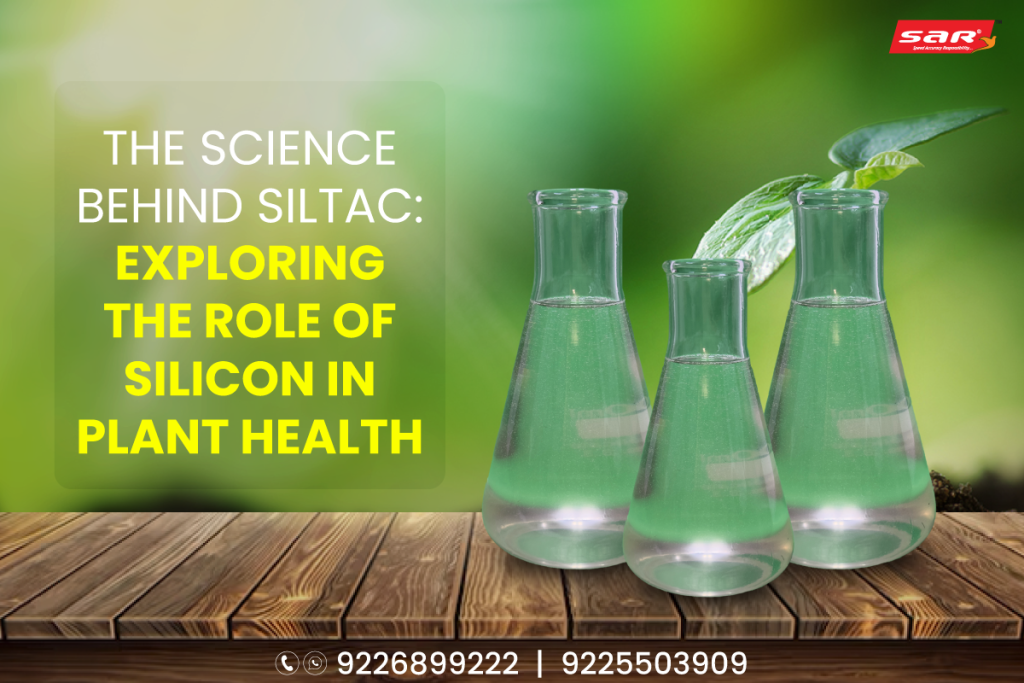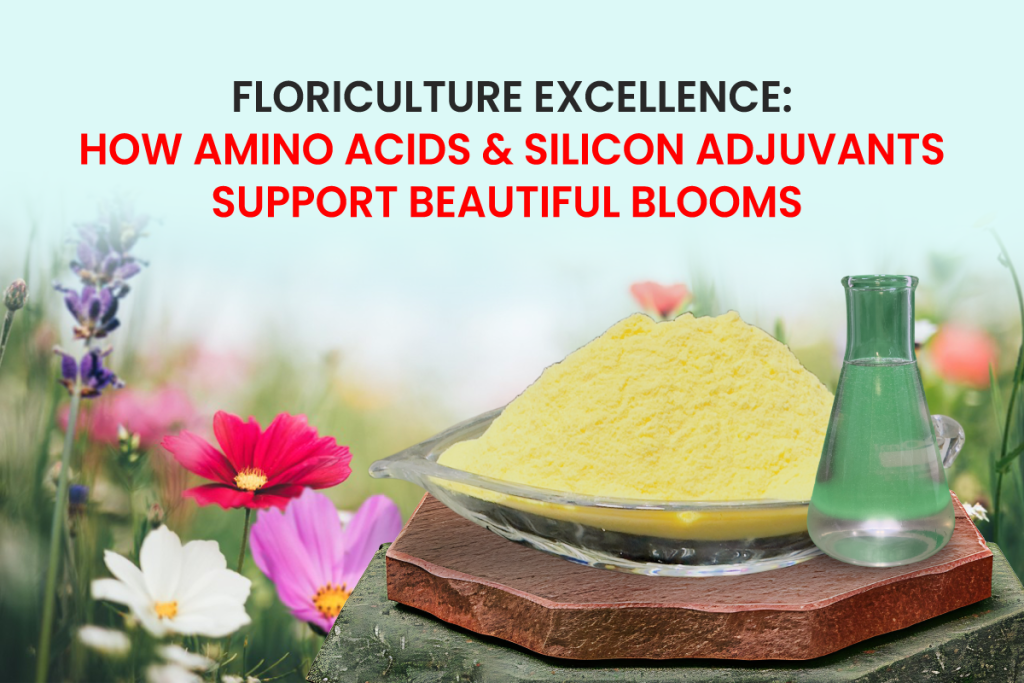
Within the Agricultural world, ensuring plant health stands at the base for both high yields and sustainability of farming practices. Although basic macroelements like nitrogen, phosphorous, and potassium are commonly associated as being essential for plant growth micronutrients have been less studied, and beneficial elements such as silicon even more so. An agricultural product like Siltac, which is produced by employing silicon as the base material, presents the potential to transform plant performance. Here we take a deep dive beyond the brand and explore how silicon fits into plant health, including its benefits as well as modes of action in Siltac compositions to ultimately understand what is needed today amidst global agriculture.
Why Silicon is Useful for Plants
Silicon a Friend of Element
Though silicon (Si) is not an essential element for plants, it has been considered a beneficial nutrient for many plant species. As reported in numerous researches, (Si) has a significant role to play in improving the defence mechanisms of plants against biotic and abiotic stresses. The presence of silicon is not essential for the completion of their life cycle, but it greatly benefits plants in terms of health and productivity.
Uptake and Accumulation of Silicon
Silicon as mono-silicic acid (H4SiO4) is soluble, so plants take silicon from the soil this way. (Si) gets removed in the roots of a plant Silicon moves in the plant and is primarily deposited as silica (SiO2) in cell walls, intercellular spaces, and other tissues reaching up to a content of 10 wt% for example. Grains of the grass family (the Poaceae) are particularly good accumulators, and many species known as silicon accumulators include rice, wheat, and sugarcane.
How Silicon Protects Your Plants
1. Strengthening Cell Walls
The chief benefit of (Si) is increased strength in plant cell walls. When deposited in walls, (Si) forms a barrier that improves the mechanical strength and rigidity of a plant structure. The result is a stronger and more resilient plant, better prepared to withstand physical damage – for example from lodging (bending or breaking of stems) caused by strong winds and heavy rainfall.
2. Enhancing Disease Resistance
Silicon increases the resistance of plants against multiple fungal, bacterial, and viral diseases. (Si) deposited in plant tissues helps to form a barrier that physically prevents infection by restricting pathogen penetration and colonization. In addition, silicon can induce the synthesis of phytoalexins and other defense-related compounds that further contribute to plant immunity.
3. Mitigating Abiotic Stress
Plants, as sessile organisms, have to endure multiple abiotic stresses such as drought and salinity along with heavy metal toxicity. It improves water use efficiency in plants, enhances antioxidant defense mechanisms, and reduces the uptake and translocation of toxic metals to mitigate their stresses. Therefore they show better growth and productivity under stress or adverse environmental conditions.
4. Enhance Photosynthesis and Nutrient Uptake
Silicon has been shown to increase photosynthetic efficiency by enhancing the structure and function of chloroplasts, the plant organelles where photosynthesis occurs. Silica also increases nutrient availability and dissemination by encouraging root growth. This leads to improved plant health and increased biomass productivity.
Siltac: Using Silicon Power
What is Silica?
Siltac is a silicon-containing agricultural product simulating the benefits derived from the use of silicon for improving plant health and performance. With a high level of soluble silicon, it is formulated to be plant-ready. Siltac is formulated for use as either a foliar spray or soil amendment to allow it to be used across all crops and growing practices.
Mechanisms of Siltac
1. Foliar Application
When used as a foliar spray, Siltac supplies silicon to the leaves, stem, and other above-ground plant parts. The silicon is rapidly absorbed and moves through the plant, whereby it cumulates in cell walls raising these significantly improving natural defense mechanisms of a higher resistant crop. Mocap + Foliar – Siltac provides rapid, protective action against both biotic and abiotic stresses when applied as a foliar.
2. Soil Amendment
Siltac improves the ability of plant roots to obtain (Si) from mineral soil, and can improve general health. This (Si) improves root development thus promoting nutrient and water uptake. Moreover, Siltac can also better soil structure and water holding capacity which ultimately would be a healthier place for plant invigorate.
Benefits of Using Siltac
1. Increased Crop Yields
Siltac has the potential to increase plant productivity by improving both health and resilience. Higher biomass and better-quality produce are ultimately what make healthier plants more productive. This increase in yield is crucial for farmers wishing to attract higher returns on their investments.
2. Reduced Disease Incidence
This ability of Siltac to enhance the plant immune system, thus making it more difficult for pathogens to breach through cell walls leads indirectly but positively towards a reduced incidence of disease. The direct impact is the burden on insecticide applications is decreasing due to less disease pressure, which means directly lesser losses and this reduces dependency on chemical pesticide application work in sustainable farming.
3. Improved Stress Tolerance
In contrast, plants treated with Siltac display improved tolerance to abiotic stresses like drought salinity and heavy metal toxicity. Crops grown from seeds with stress tolerance allowed planting in areas where they would previously struggle to energize, and even solely grow.
4. Sustainable Agriculture
Diverting salt underground supports sustainable agriculture by minimizing the need for chemical inputs and promoting soil health. Silicon is abundant in nature, therefore it fits with sustainable agricultural systems that have the goal of reducing environmental impacts from agriculture.
Uses of Siltac in Contemporary Agriculture
1. Cereal Crops
Association of Cereal crops such as Rice, Wheat, and Maize are important major staples in the world. These are silicon-accumulating crops that derive considerable advantage from the addition of (Si). Application to Siltac crop development can improve the crop’s performance, promoting global food security.
2. Horticultural Crops
Silicon supplementation also benefits horticultural crops such as fruits, vegetables, and ornamentals. Siltac can improve the quality of fruits and vegetables, reduce post-harvest losses as well as effectively extend additional shelf life on some crops (longer than those usually treated with GA3) while enhancing its visual appearance.
3. Industrial Crops
Siltac application can help sugarcane, cotton, and oilseeds with the growth & productivity of industrial crops The benefits of increased stress tolerance and disease resistance that (Si) confers are particularly important for large-scale commercial agriculture.
Conclusion
The science of Siltac is based on the key importance that silicon plays in optimizing plant health and performance. In modern agriculture, silicon is a useful tool because it hardens cell walls, increases disease resistance as well as abiotic stress protection, and enhances photosynthesis and nutrient accumulation. The silicon contained in Siltac, is derived from a natural source and when used as an agricultural product allows the plant to take care of itself. By using Siltac, the farmers can have an increase in their productivity as well as a decrease in disease rate and they would also contribute to sustainability. Scientific exploration of silicon’s potential continues to reveal effective ways through which plant health can be further improved, and its relevance for food security in a changing world is secured.

